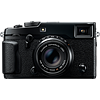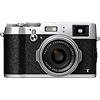Main
Model
Price
Advantages
launch
Announced
Body type
Camera subcategory
Sensor
Effective pixels
Max resolution
Sensor size
Sensor type
Processor
Image ratio w:h
Other resolutions
Image
ISO
Boosted ISO (minimum)
Boosted ISO (maximum)
White balance presets
Custom white balance
Image stabilization
Uncompressed format
JPEG quality levels
Photography features
Minimum shutter speed
Maximum shutter speed
Maximum shutter speed (electronic)
Aperture priority
Shutter priority
Manual exposure mode
Subject / scene modes
Built-in flash
External flash
Flash modes
Continuous drive
Self-timer
Metering modes
Exposure compensation
AE Bracketing
WB Bracketing
Flash range
Screen / viewfinder
Articulated LCD
Screen size
Screen dots
Touch screen
Screen type
Live view
Viewfinder type
Viewfinder coverage
Viewfinder magnification
Viewfinder resolution
Videography features
Resolutions
File Format
Microphone
Speaker
Optics & Focus
Autofocus
Manual focus
Number of focus points
Lens mount
Focal length multiplier
Focal length (equiv.)
Optical zoom
Maximum aperture
Digital zoom
Normal focus range
Macro focus range
Physical
Weight (inc. batteries)
Dimensions
Environmentally sealed
Battery
Battery details
Battery Life (CIPA)
Storage
Storage types
Connectivity
USB
HDMI
Microphone port
Headphone port
Wireless
Wireless notes
Remote control
Other features
Orientation sensor
Timelapse recording
GPS
Samples
Videos
Summary
The X-Pro2 maximum resolution of 6000 x 4000 pixels (24 megapixels) is better than the X100T highest resolution of 4896 x 3264 pixels (16 megapixels). The X100T is equipped with bigger sensor than the X-Pro2: APS-C (23.6 x 15.8 mm) versus APS-C (23.6 x 15.6 mm). It is very important advantage of this model as large sensor allows you to make photos of the higher quality. The X-Pro2 offers more focus points in compare with the X100T: 273 vs 49. More focus points means less risk of losing focus lock when following a moving object.
The X-Pro2 screen is better as it has more screen dots 1,620,000 in compare to 1,040,000 dots of the X100T screen. The higher dot count screen is better for reviewing pictures on your camera. The Fujifilm X-Pro2 offers better fastest shutter speed - 1/8000 second.
The X100T is equipped with built-in flash. The X-Pro2 is environmentally sealed i.e. it will be safe even uncovered if the photographer is out capturing photos in the rain or snow. The X-Pro2 battery life is better than the X100T battery life. According to CIPA standards the photographer will be able to make 350 photos with the X-Pro2 and only 330 with the X100T. The Fujifilm X100T weighs 440g that is 55g lighter than the weight of the Fujifilm X-Pro2.
The X-Pro2 has 8 advantages and the X100T only 3 so the X-Pro2 will be the best buy. Check the list of the best offers on Amazon.


